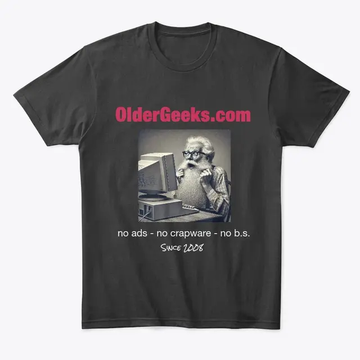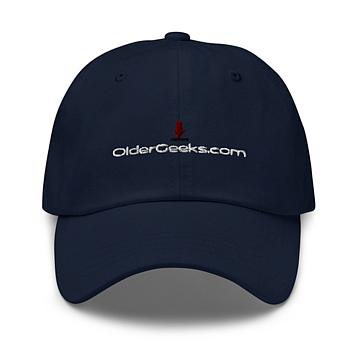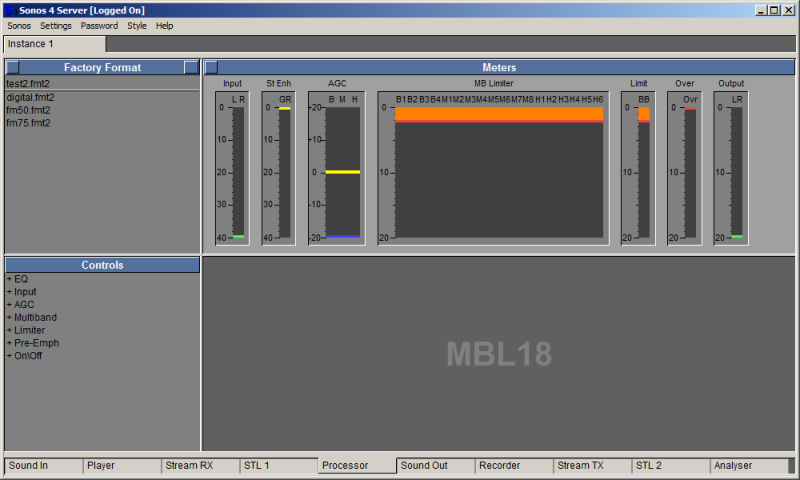|
|

Your download link is at the very bottom of the page... always. |
Processed through Paypal No account required. |
Buy our over-priced crap to help keep things running.










|
|

Your download link is at the very bottom of the page... always. |
Processed through Paypal No account required. |










| File - Download Sonos 4 6.8.0 | ||||||||
| Description | ||||||||
|
A plea... Deanna and I have been running this site since 2008 and lately we're seeing a big increase in users (and cost) but a decline in percentage of users who donate. Our ad-free and junkware-free download site only works if everyone chips in to offset the revenue that ads on other sites bring in. Please donate at the bottom of the page. Every little bit helps. Thank you so much. Sincerely, your Older Geeks: Randy and Deanna Always scroll to the bottom of the page for the main download link. We don't believe in fake/misleading download buttons and tricks. The link is always in the same place. Sonos 4 6.8.0 Sonos 4 is a software real time multiband FM processor for broadcasters. With a suitable sound card it is possible to turn a Windows PC into a broadcast limiter. The processor achieves its loudness through the use of a unique distortion masked final clipper (a distortion cancelled clipper). The sound quality and loudness is close to industry standard Optimods and Omnias. Sonos 4 introduction Sonos 4 is a software real time multiband compressor limiter for radio broadcasters. With this software and a suitable sound card it is possible to turn a Windows PC into an radio broadcast processor. The processor achieves its loudness through the use of a unique distortion masked final clipper. Computer requirements Windows XP, Windows Vista or Windows 7.(Windows XP needs to be fully updated via Windows Update). The CPU needs to be SSE/SSE2 capable. Most recent CPUs meet this requirement. To check for this capability download this program and run it. There are so many different CPUs the only way to check if yours is powerful enough is to download Sonos 4 and try it. As a guideline a dual core 2GHz CPU is recommended. The amount of memory is not critical.1-2GB is sufficient. A 192kHz sample rate sound card is needed to use the built in stereo multiplex and RDS encoders. Use of a 'pro' sound card with balanced inputs and outputs is recommended to minimize noise pick up. Some possible choices for a 192kHz sound card are the M-Audio Audiophile 192, ESI Juli@, EMU 0404 (PCI version). If you need to interface Sonos 4 to other audio applications this can be achieved with Virtual Audio Cables. General features Sonos 4 interfaces to sound cards using either ASIO or the Windows native multimedia sound interface.If the ASIO interface is used then low latency mode can be used.Use of ASIO is dependent upon the sound card having ASIO drivers.Most 'Pro' sound cards support ASIO.Low latency mode enables off air monitoring while speaking just as hardware FM & AM processors do. The application is password protected to prevent unauthorized tampering. Sonos 4 can be automatically started when Windows boots.Additionally the application can be made to minimize to the 'Sys tray'. Sonos 4 supports multiple instances.It is theoretically possible to have up to twenty processors but CPUs are not powerful enough yet to support all twenty processors. The processors. The processor is the central feature of Sonos 4. There are three different processors available mainly differing in the number of bands The nine band (MBL9) is the recommended choice but it may overload some computers so to reduce CPU load a processor with fewer bands can be selected. All four processors share common parts such as four stages of parametric equalization, stereo widener, stereo enhancer, phase rotator, filtering for FM and AM, switchable pre-emphasis for FM. The processor architecture is similar in each of the five processors. Dual band gated AGC is followed by a gated multiband limiter optionally preceded by a multiband compressor. Then optionally there is a dual band limiter.Single band gated limiting is applied before the final clipper. Pre-emphasis for FM is applied partially before the multiband section and partially after the final clipper. The processor settings are fully adjustable with easy to use saving and loading of preset files. There is a 'Daypart' scheduler to enable changes of preset (format) by time of day and day of the week. The processors have a 'Fail Over' or failsafe feature that switches the input to a backup should the main source fail. Finally the processor can be disabled to reduce CPU load. The stereo multiplex, RDS encoders and SCA generator. It is possible to drive FM transmitter MPX inputs directly from Sonos 4.It needs a 192kHz sound card with adequate bandwidth to pas the MPX signal. The stereo multiplex encoder has adjustable clipping for extra loudness. The pilot tone amplitude is adjustable. The RDS/RBDS encoder supports all the basic RDS features plus it has a scrolling 'Program Service Name' feature with multiple messages that can be set up as a rotation. In addition there is a means of showing current track information. The SCA generator supports frequencies from 20kHz to 90kHz and deviation from 1kHz to 10kHz. The audio over IP function (STL). The STL link uses Ogg/Vorbis encoding that achieves FM like quality at 64kBits/s. A normal ADSL broadband feed can be used to link to a remote site. The link can feed multiple sites limited only by the available bandwidth of the Internet connection.(The software has a limit of eight feeds). The other use of the link is for outside broadcasts or feeds from remote studios. The link is low latency (adjustable)and bi-directional for such linking. The STL uses a peer-to-peer method using UDP packets. There is a server-client method of establishing UDP peer-to-peer connections. This is an aid for sites that do not have a fixed IP address. The STL link implements virtual RS232 Serial Data ports for remote control. The serial data link is bi-directional. Internet streaming. Sonos 4 has the ability to connect to Icecast & Shoutcast servers for Internet streaming. The software allows up to four connections. This enables the use of a low and a high bandwidth feeds.The supported encoding types are Ogg/Vorbis.,MP3 & AAC+. MP3 & AAC+ streaming need the Winamp plugins to be present. Additionally there is a means of displaying current track information.(This requires automation software to output the current track information to a file). Logging recorder. The software has a basic audio recorder that operates in three modes. The logging mode is an hour by hour recorder using Ogg/Vorbis encoding. There is a feature for retrieval by time and date of a log file. Additionally there are modes for continuous recording and timed recording. Sound file player. The player will play sound files (.wav,.ogg or mp3) without gaps. For broadcasters the main use will be as a backup source in the event of the main feed failing. The sound file player supports the use of a playlist that repeats in the event of a failure.(Win XP does not support playback of MP3 files). Internet streaming player. The player (Stream RX) supports the use of streaming as a method of linking. The software supports multiple URLs with automatic reconnection should a stream fail. The player supports Ogg/Vorbis and MP3.(Win XP does not support playback of MP3 streams) Other features. There are other features that do not directly relate to broadcasting. The sound input can decode MPX , RDS & SCA signals. There is an 'Analyser' function for inspecting waveforms and spectra. There is a signal generator with features that are useful in analysis of audio software and hardware. Changes to Sonos 4 v6.8.0 4th April 2016 Removed the distortion cancelled clipper (DCC) because it had no effect. Added a dual band limiter. I have reluctantly come to the conclusion DCC is a faulty concept. The Robert Orban patent number 4,412,100 Figs 1 & 2 were the basis of my implementation. If the non DCC proves to be just as good as the DCC version I will change MBL6 & MBL18. 
Continue below for the main download link. |
||||||||
| Downloads | Views | Developer | Last Update | Version | Size | Type | Rank | |
| 6,268 | 13,531 | www.burnill.co.uk <img src="http://www.oldergeeks.com/downloads/gallery/thumbs/sonos4_th.png"border="0"> | May 04, 2016 - 11:57 | 6.8.0 | 798.3KB | EXE |  , out of 65 Votes. , out of 65 Votes. |
|
| File Tags | ||||||||
| Sonos 4 6.8.0 | ||||||||
|
Click to Rate File Share it on Twitter → Tweet
|